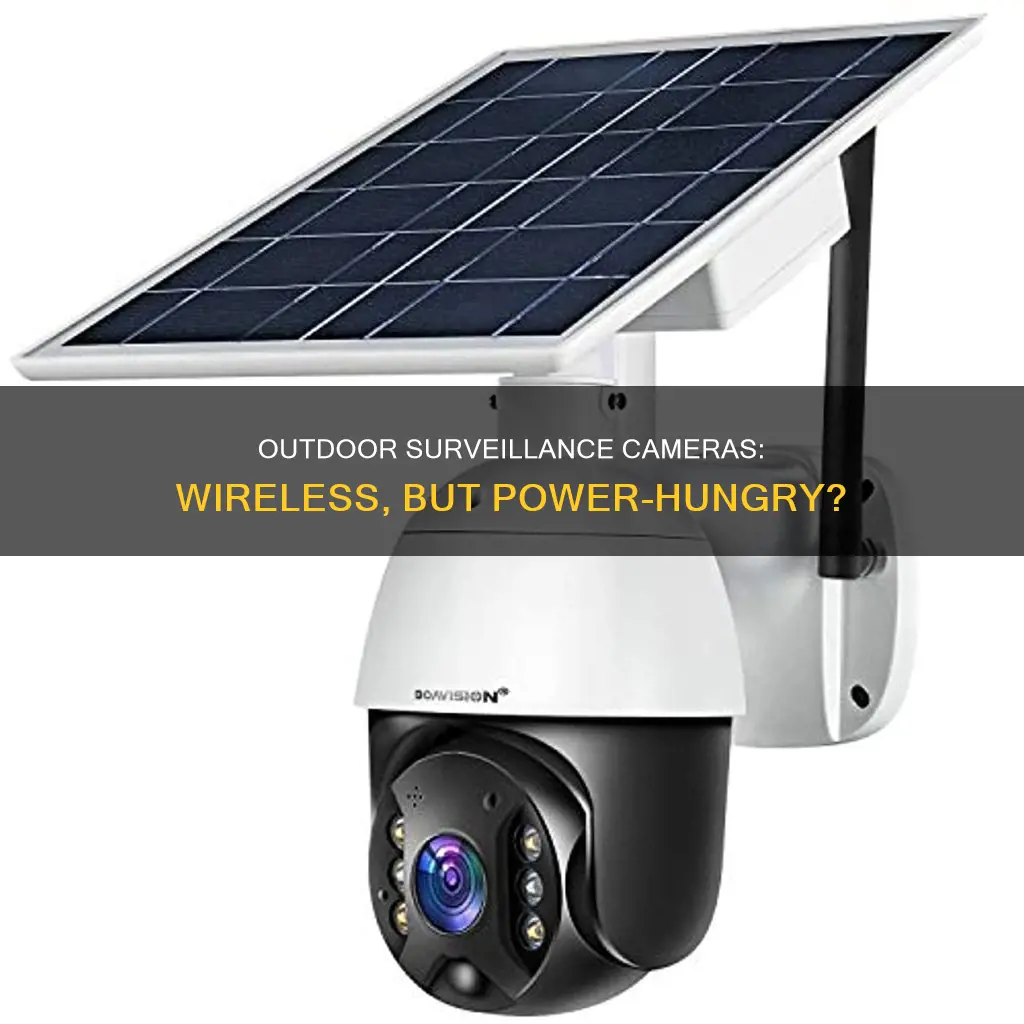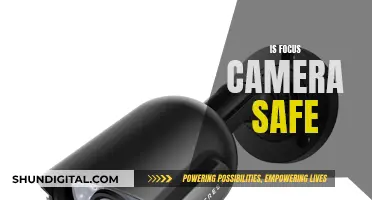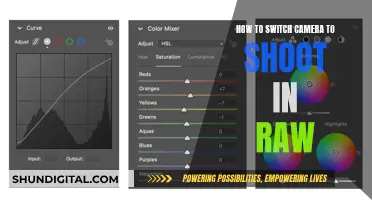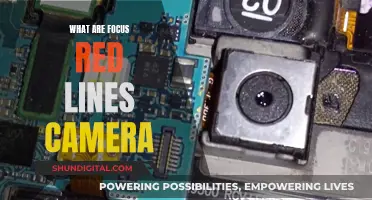
Wireless outdoor surveillance cameras can be a great addition to your home security system, offering peace of mind and a sense of security. But do these cameras require a power source? The answer is yes, but the type of power source can vary. Some wireless cameras are battery-powered, offering a truly wire-free security solution. These cameras operate using batteries and don't require an additional electrical power source. Another option is solar-powered cameras, which use solar panels to collect solar power and rechargeable batteries to store energy. Alternatively, some wireless cameras need to be plugged into an electrical outlet, requiring a power cable and a nearby power source. When choosing a wireless outdoor surveillance camera, it's important to consider factors such as power source requirements, camera placement, and the desired level of security and convenience.
| Characteristics | Values |
|---|---|
| Wireless Security Camera Power Sources | Wireless Security Cameras That Need to Be Plugged In; Wireless Security Cameras That Are Battery Powered; Wireless Security IP Cameras That Are Solar Powered |
| Power Source Installation | Requires a power outlet nearby or the installation of a new outlet |
| Power Cable Management | Use conduit or cable management solutions to protect and hide the cables |
| Power Connection | Plug the power cable into the camera's power input port and the other end into the power source |
| Power Backup Options | Battery backup or a UPS (Uninterruptible Power Supply) |
What You'll Learn

Wireless cameras can be plugged into an electrical outlet
Wireless cameras are a great option for monitoring your home or office. When it comes to powering these devices, you have a few options, and one of them is to plug them into an electrical outlet. This method ensures a constant power supply to your wireless camera, keeping it operational at all times.
Wireless cameras that need to be plugged into an electrical outlet are a common type of wireless security camera. While the data transmission from the camera to a recording device or monitor is wireless, these cameras still require a power cord connected to an electrical outlet. This hybrid approach offers the benefits of wireless data transmission while ensuring a stable power supply.
When choosing a wireless camera that plugs into an electrical outlet, it's important to consider the distance between the camera and the power source. If you're installing the camera outdoors, make sure there's an easily accessible outlet nearby. This will ensure a neat setup and reduce the risk of someone tripping over the power cord.
If there isn't an outlet within reach, you may need to hire an electrician to install a new one. It's important to use outdoor-rated power outlets and extension cords to protect the camera and power connection from the elements. This ensures that your camera can withstand various weather conditions without interruption.
Another advantage of plugging your wireless camera into an electrical outlet is the ease of installation. Most of these cameras use a simple plug-and-play setup, saving you from the hassle of complex wiring. This makes them a convenient choice for those who want a quick and straightforward installation process.
When setting up your wireless camera, be sure to carefully route the power cord and use cable management solutions to keep it neat and secure. This will help create a tidy appearance and reduce the risk of accidents. Additionally, consider using weatherproofing techniques, such as outdoor-rated conduit or waterproof cable connectors, to protect the power connection from moisture and water damage.
By plugging your wireless camera into an electrical outlet, you can enjoy the benefits of constant power, easy installation, and reliable performance. This power option is ideal for places with readily available electrical outlets and a stable WiFi network. With proper setup and maintenance, your wireless camera will provide ongoing surveillance and peace of mind.
Charging Your Xiaomi Yi Camera: A Quick Guide
You may want to see also

Wireless cameras can be battery-powered
Battery-powered wireless security cameras are often equipped with motion detection technology, which helps to conserve battery life. The cameras will only be activated when motion is detected, and you will be notified about the remaining battery power via the camera software. This feature ensures that your security system remains operational without constant battery replacements.
Some models offer additional features, such as two-way audio, colour night vision, and spotlight functionality. These features enhance the camera's ability to capture clear footage, even in low-light conditions.
When choosing a battery-powered wireless camera, consider factors such as video quality, battery life, and additional features that meet your specific needs. It is also essential to select a reputable brand that prioritises security and privacy.
Battery-powered wireless cameras provide a convenient and flexible option for home security, offering a wire-free setup and efficient power management.
Polaroid OneStep Close-Up: Battery Life Explained
You may want to see also

Wireless cameras can be solar-powered
Solar-powered security cameras rely on small solar panels that convert sunlight to electricity to charge the camera's built-in rechargeable batteries. The integrated inverters in the cameras can also convert direct current (DC) power from solar panels into alternate current (AC) electricity, ensuring the cameras stay powered even when the sun is not out.
When choosing a solar-powered wireless camera, consider the following key features: camera resolution, field of view, solar panel wattage, night vision, motion activation, remote monitoring, and smartphone alerts. A wider field of view is always preferable for security cameras, and a higher-wattage solar panel will deliver more power to the camera. Additionally, look for optional features such as two-way audio, geo-fencing, an integrated intruder siren, and a built-in floodlight, which can enhance home monitoring.
It is also important to consider the placement of your solar-powered wireless camera. For optimal performance, install the camera in a location that receives ample sunlight and provides the best coverage. If you live in an area with limited sun exposure, installing the camera on a south-facing wall will help ensure it receives enough sunlight. It is also recommended to place the camera high on the wall, out of reach of potential intruders.
Some popular options for solar-powered wireless cameras include the Reolink Argus 3 Pro, which offers excellent video quality and customisation options, and the Ring Stick Up Cam Solar, which comes with a solar panel and offers features such as 1080p resolution, night vision, and two-way talk.
Solar-powered wireless cameras offer increased flexibility and convenience, making them a great choice for those seeking a truly wireless security solution.
Mastering Post Focus on Your Lumix Camera
You may want to see also

Wired cameras can be powered via Ethernet cable
Wired security cameras, also known as Power over Ethernet (PoE) cameras, offer a range of benefits compared to their wireless counterparts. PoE cameras receive power and data through a single Ethernet cable, simplifying the amount of infrastructure required and making them a highly reliable option.
PoE technology has been extensively developed and is now considered a mature technology. It is commonly used in network routers, wall clocks, point-of-sale kiosks, and access control systems. PoE cameras are an excellent choice for organisations with multiple security cameras as they offer greater flexibility and more options for camera placement. With PoE, there is no need to install cameras near electrical outlets, allowing for more control over their placement.
In addition, PoE cameras reduce maintenance requirements and simplify management. They require less cabling and hardware, and can be managed through a Simple Network Management Protocol. PoE systems also offer lower installation costs since they can be installed by anyone and do not require a certified electrician.
PoE cameras provide better power reliability as they have a central power source instead of relying on individual wall adapters. This central source can be an uninterruptible power source (UPS), ensuring that the cameras continue to operate even during a power outage. PoE cameras also offer better network reliability compared to WiFi cameras, providing a hardwired internet connection that is less likely to break or degrade.
Furthermore, PoE cameras offer increased system safety. They are designed to deliver power safely and efficiently, ensuring proper power throughout the product's life to prevent overloading or under-powering. More advanced PoE products also have protection against short-circuiting and excessive current, making them safer than traditional systems powered by outlets.
To summarise, wired cameras that are powered via Ethernet cables offer advantages in terms of flexibility, maintenance, cost, reliability, and safety. They are a straightforward upgrade for organisations seeking to enhance the performance and management of their security camera systems.
Focusing Your Camera in Unity: A Step-by-Step Guide
You may want to see also

Wired cameras can be powered via a nearby electrical outlet
Wired security cameras, also known as PoE (Power over Ethernet) cameras, offer a convenient and reliable power solution for outdoor surveillance. These cameras receive both power and data transmission through a single Ethernet cable, eliminating the need for separate power cables. This makes PoE cameras a popular choice for those seeking a neater and more streamlined installation process.
When setting up wired cameras, it is crucial to ensure a stable power supply. This can be achieved by connecting the camera to a nearby electrical outlet. The process typically involves plugging the power adapter or cable into the camera's power input port and then connecting it to the power source, such as an outdoor-rated power outlet. It is important to use weatherproof power outlets and extension cords to protect the camera from the elements.
To facilitate the power connection, you may need to install a new outdoor-rated power outlet near the camera's mounting location. This ensures that the camera has a dedicated and secure power connection. If you are unsure about electrical work, it is recommended to consult a professional electrician for assistance. They can safely install the power outlet and provide advice on cable management and weatherproofing techniques.
By opting for wired cameras with a constant power supply, you can enjoy peace of mind knowing that your surveillance system is always operational. This reliable power solution ensures that your cameras are monitoring and recording without interruption, providing enhanced security for your home or business.
Crafting Camera-Friendly Paper: Secrets of Positive Paper Making
You may want to see also
Frequently asked questions
Yes, wireless outdoor surveillance cameras do require a power source. There are three types of power sources for wireless security cameras: 1) plugged into an electrical outlet, 2) battery-powered, and 3) solar-powered.
Wireless cameras are generally easier to install and require fewer wires to deal with. They can be placed almost anywhere and do not require the additional cost of hiring an electrician.
Some recommended wireless outdoor surveillance cameras include the Arlo Pro 5S, Reolink Argus 4 Pro, Ring Stick Up Cam Pro, Blink Outdoor 4, Google Nest Indoor/Outdoor Cam (2nd Gen), Arlo Pro 3 with Floodlight, and Eufy SoloCam S230.
When choosing a wireless outdoor surveillance camera, consider factors such as resolution, field of view, weather resistance, night vision capabilities, power source requirements, connectivity options, storage options, and integration with existing security systems. Select a camera that best fits your specific needs and budget.







